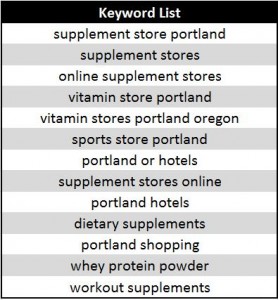At Mad Fish Digital, or any digital agency, you are guaranteed to hear clients asking, “When can I expect to rank on the first page of Google?” To that we say, “Great question!” The answer is not one that is simply answered and I will explain why.
The Good Ol’ Days of Keyword Rankings
Several years back – circa 2012 – marketing professionals could give clients an honest estimate of when they could expect their keywords to start ranking in Google. Generally it was 1-2 months to see positive results and only about 2-4 months for those keywords to make it to the first page of search results. It was a happy time for SEO companies and a happy time for business owners, because if you played by the rules and followed best practices, you clients could reap the results.
Unfortunately many did not play by the rules and abused Google’s best practices. Google put the smack down on SEO “black hat” tactics that many disreputable agencies were using. This smack down, as it were, took the form of an algorithm update in April 2012, which was nicknamed Panda. Websites that had been acquiring spammy links (unnatural links, links from sites that are unrelated to the business, etc.), keyword stuffing content, and overusing exact match keyword anchor text took a hit in the rankings – some business website even received a manual action penalty from Google.
Throw Out Your 100+ Keyword List
Today, clients should be given keyword ranking expectations upfront that are attainable. Google consistently changes its algorithm in order to improve search engine optimization. Earning that first page ranking requires a strategic and consistent content marketing plan. It is more efficient to focus on improving the rankings for a handful of bread and butter keyword terms with a consistent content marketing plan than to focus on a 100+ keyword list and be disappointed that you aren’t ranking for all of them.
Keyword results should be measured by monitoring the most important terms, or groups of terms that you are focusing on in your content marketing plan. Keep your eye on the prize. Consistency in your strategy and a little patience continues to be the best way to achieve results.
Businesses should not expect to rank for keyword terms if:
- They do not have a dedicated website page that includes those terms
- They do not produce quality content that is relevant to that term – and on a consistent basis.
- They do not fully implement technical SEO best practices on their website
Long-Tail Why?
Some people have heard of long-tail keywords, but even those that don’t know that term understand it as soon as you provide an example.
Query 1: “supplement store Portland”
Query 2: “where can I get vitamins in Portland?”
Query number 2 is considered a “long-tail keyword”. It uses several words, often in the form of a question. If your website holds the answer to that question or has content that is relevant, guess what? You have a better chance of ranking for that search term. Long-tail keywords are very efficient because often the click to your website from those queries is a more qualified lead. Users know what they want and need the answer. So while you might not be ranking for “supplement store Portland” you could be ranking for variations and longer-tail queries that still pertain to your business. Query 2 even suggests by their search that they are ready to buy because they included the word ‘get”.
Incorporating long-tail keyword usage in your content marketing strategy may seem easier said than done and there can be anomalies that can vary by client, industry, competition, and geo area. But the point is that authoring and hosting informative content on your website can go a long way in directing qualified leads to your site. And whether you have a personal blog, an ecommerce store, or you are a local service-based business, becoming an industry authority on the topics you want to rank for builds trust and authority – not only with your visitors, but also with Google.
So Where Do You Start?
By now you may have noticed the common theme here – produce quality, customer-focused content. I cannot stress the importance of this enough. The following are a few helpful hints to get you started on the path to success:
- Produce quality content! Make it relevant to your business, but do not feel the need to stuff multiple keywords within the blog post, article, etc. Write something that you know your audience will find helpful. Ask yourself, “Would I read this?”
- Link internally and externally in your content, but only if it is actually helpful to the reader. For example, you might link to an external site that produced a study that you referenced in your article. That is helpful. Linking to Dictionary.com ten times in one post is not doing your business any good.
- Refresh your title tags and meta descriptions. This is SEO 101 and can provide a nice bump to keywords that have been stagnant. Plus, Google’s constant updates often relate to best practices, For example, the title tag character count used to be 65 and now Google suggest 50.
The old saying goes, “Don’t put all of your eggs in one basket” and that is true in the digital marketing world as well. Currently content remains king for ranking organically; however, a comprehensive marketing plan that includes content as well as technical SEO and focused-advertising is the best recipe for success.



